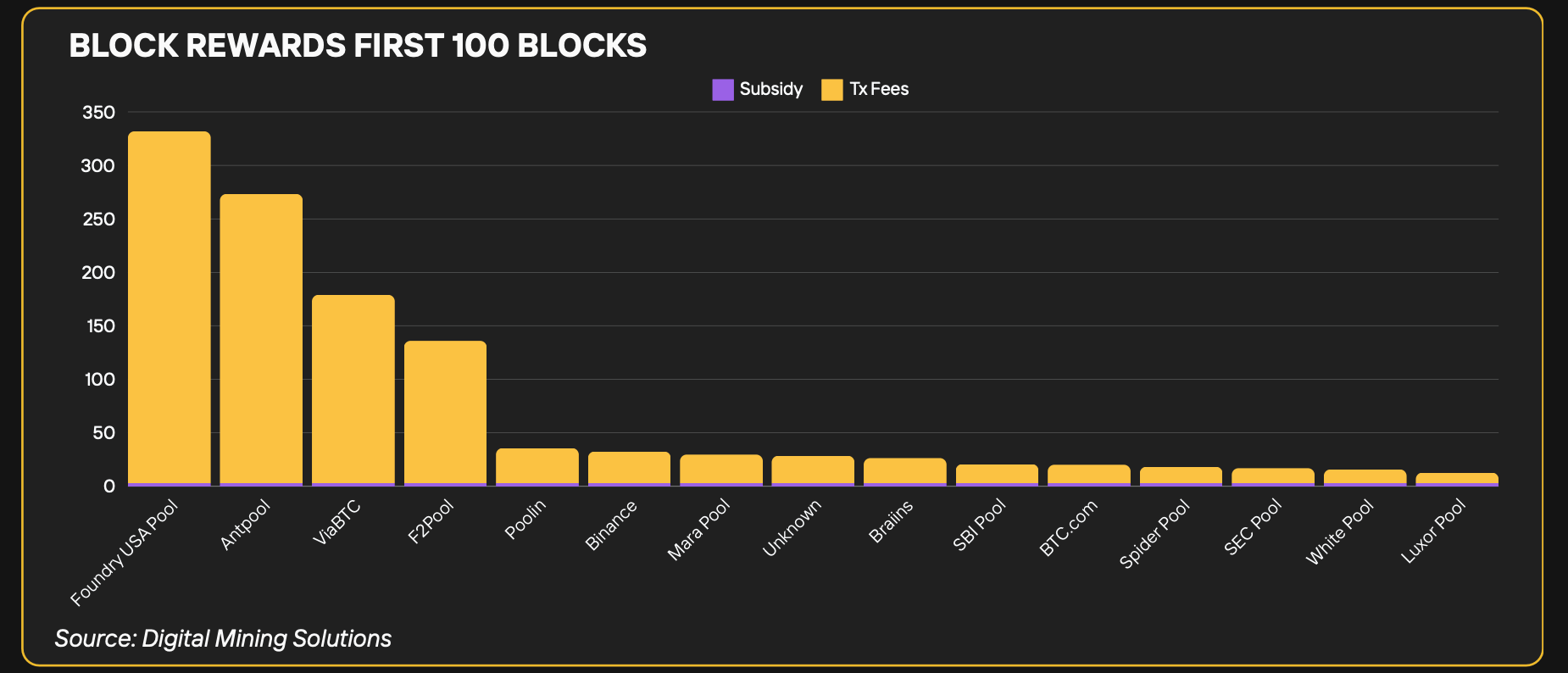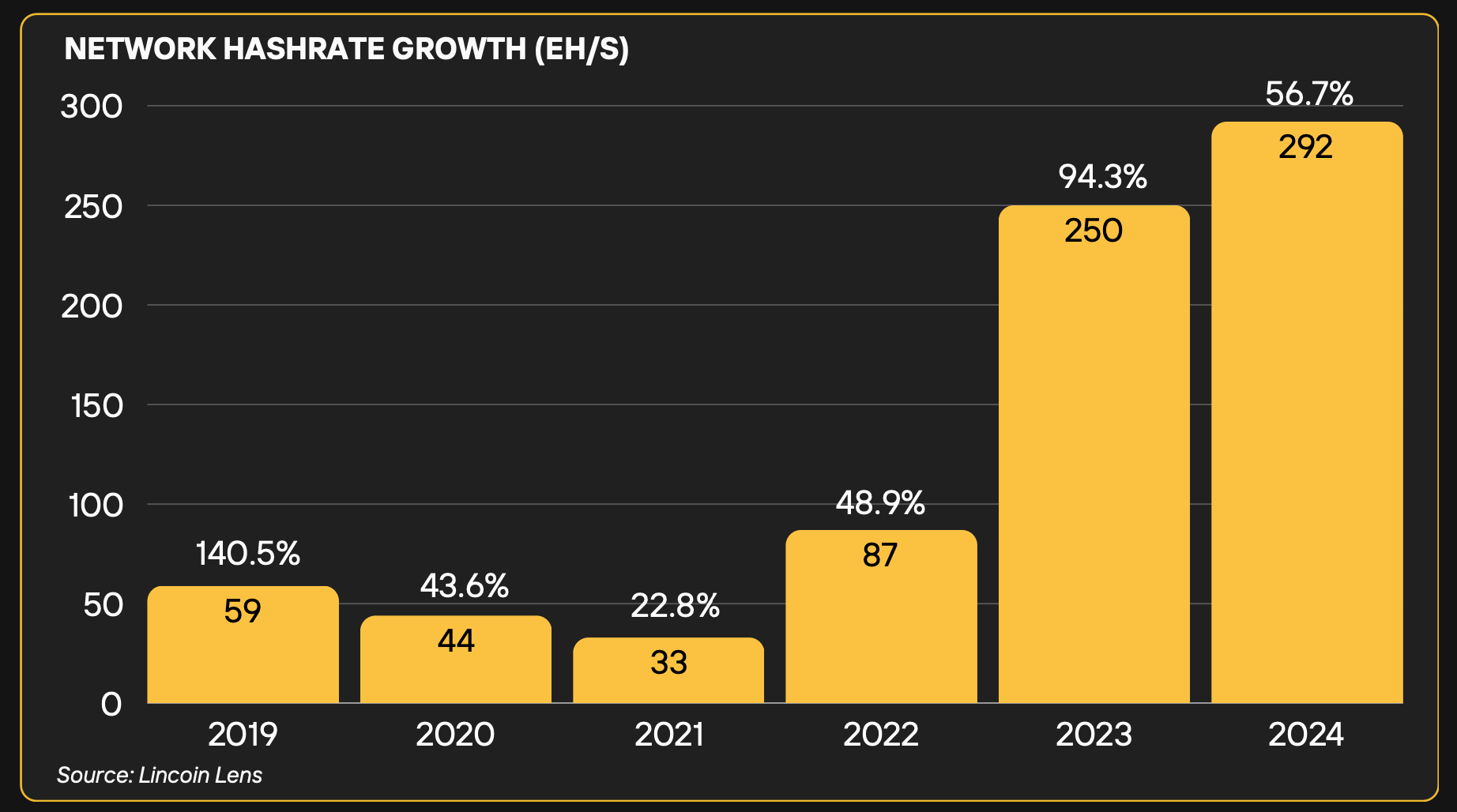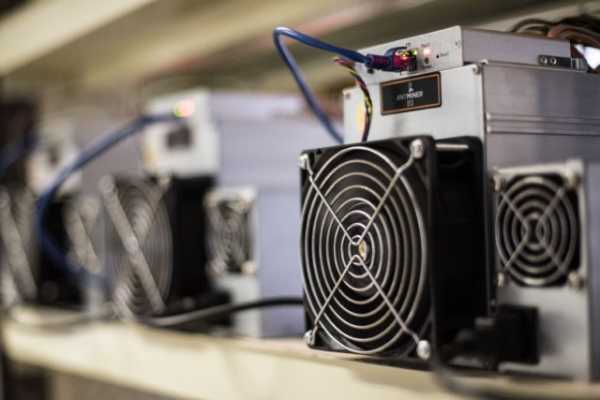Inside Bitcoin Mining’s 2024 Revolution: Report Reveals Triumphs and Trials

The 2024 bitcoin mining industry reached historic milestones while grappling with significant obstacles, according to an extensive report sponsored by Nicehash and authored by Digital Mining Solutions and Bitcoinminingstock.io. The comprehensive study sheds light on unprecedented network expansion, advancements in hardware efficiency, and major economic transitions.
Nicehash and Digital Mining Solutions Showcase the Bitcoin Mining Industry’s Unprecedented Growth in 2024
Bitcoin mining operations in 2024 experienced phenomenal growth, with network hashrate peaking at 808 exahash per second (EH/s) by year-end, according to Digital Mining Solutions‘ and Bitcoinminingstock.io‘s report authored by Cindy Feng and Nico Smid. Miners contributed nearly 300 EH/s to the network, surpassing all previous records. However, this rapid expansion came with challenges. April’s fourth bitcoin halving event reduced the block subsidy from 6.25 BTC to 3.125 BTC, exerting considerable pressure on miners’ profitability.
Bitcoin’s price crossed the $100,000 threshold in 2024, closing the year at $93,400—an increase of 121.3% from January. This surge elevated its market capitalization to $2 trillion, outpacing silver and positioning bitcoin as the seventh-largest global asset. Despite this rally, mining economics were strained post-halving. The hashprice—a metric reflecting miners’ revenue—dropped to a record low of $38 per petahash per day (PH/day) before rebounding to $55 PH/day by December.

Feng and Smid’s findings show transaction fees spiked during the halving, accounting for 139.8% of block rewards on April 19. While this temporarily offset miners’ revenue declines, the drop in hashprice highlighted the sector’s vulnerabilities.

The study shows the ASIC (application-specific integrated circuit) hardware market saw the release of 30 new models in 2024, focusing on hydro-cooling and standardized designs. Despite these innovations, network efficiency plateaued due to deployment delays. The Bitmain Antminer S21 series, for instance, represented just 4.1% of the network by year-end, with tangible efficiency improvements anticipated in 2025.
Falling ASIC prices mirrored broader market challenges. Mid-generation machines with efficiency levels between 25 and 38 joules per terahash (J/T) lost up to 97.5% of their value, underscoring the difficulties faced by hosting-based miners.
The mining report highlights how the United States retained its position as the leading bitcoin mining hub, commanding 38% of global hashrate. Meanwhile, emerging regions like Ethiopia and South America gained momentum by harnessing renewable energy. Ethiopia, driven by hydropower, contributed 2.5% to global hashrate—a development highlighted in the report.

Miners also explored new frontiers, diversifying into high-performance computing (HPC) and artificial intelligence (AI). U.S.-based operations repurposed mining facilities for AI workloads to mitigate inconsistent mining returns.
The Digital Mining Solutions and Bitcoinminingstock.io report anticipates further growth propelled by technological innovation and strategic diversification. As bitcoin mining evolves, operators must prioritize adaptability and resilience to contend with economic challenges and regulatory complexities.
Source: cryptonews.net



